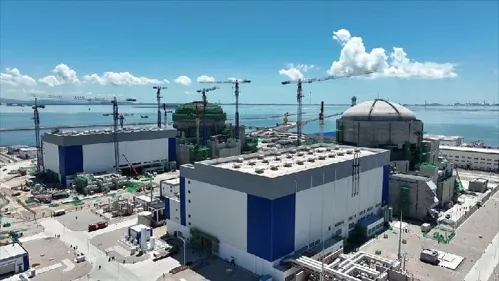China Capable of Building Over 40 Nuclear Units Simultaneously

China has demonstrated its capability to construct more than 40 nuclear power units simultaneously, highlighting significant advancements in its nuclear engineering and energy infrastructure. This assertion comes from a recent report on the nation's nuclear energy development, released by the China Nuclear Energy Association (CNEA).
The report indicates that with the Hualong One nuclear reactors moving into mass production both domestically and internationally, China's ability to build nuclear power facilities has witnessed consistent growth. The findings are detailed in the China Nuclear Energy Development Report 2025.
In terms of financial commitment, 2024 saw China's nuclear power construction investments soar to a record 146.9 billion yuan, approximately 20.16 billion dollars. This figure reflects an increase of 52 billion yuan compared to the previous year, underscoring the nation's intensified focus on nuclear energy.
This investment surge can be attributed to China's reinforced emphasis on independent research, technological innovation, and the development of advanced nuclear construction methodologies. As a result, the nation is transitioning from single-unit to multi-unit construction strategies.
Significant technological innovations have also emerged in areas such as integrated nuclear power plant construction and dome hoisting techniques. These improvements have enabled China to enhance the scale, safety, and quality of its nuclear power projects to levels that are competitive internationally.
Cao Shudong, executive vice chairman of the CNEA, stated, "China has gradually developed full lifecycle capabilities in nuclear power engineering, covering everything from design to commercial operation. Our construction and management skills for multi-unit nuclear power projects are now among the best in the world. We are capable of building 40 nuclear power units simultaneously and beyond."
Moreover, China is making strides in the comprehensive utilization of nuclear energy. The country has achieved breakthroughs in urban heating and various industrial applications while rapidly advancing nuclear technology in medicine and fostering international collaborations.
During the 2024-2025 heating season, the Haiyang, Qinshan, and Hongyanhe nuclear power plants collectively supplied heating to over 14 million square meters, yielding substantial economic and societal benefits.
Impressively, China has also progressed in isotope production. In 2024, it marked the first instance of utilizing commercial nuclear reactors for the mass production of carbon-14 isotopes, achieving full domestic production in this field.
Furthermore, the acceleration of domestic production of nuclear medical equipment is notable, accompanied by advancements in international cooperation. In 2024, China inaugurated 12 new nuclear research facilities and experimental platforms for global collaboration, including the China Advanced Research Reactor.
Cao elaborated on the international outreach, stating, "We launched collaborative projects with countries such as Thailand, Bangladesh, Hungary, Poland, and Nigeria in sectors like nuclear medicine, agricultural applications, and industrial irradiation."
Read These Next

India's AI Integration in 22 Languages
This article explores the significance of AI language processing in India, focusing on enabling communication across the country's diverse linguistic landscape. It highlights practical examples, such as delivery driver Vineet Sawant, and government initiatives like Bhashini aimed at developing AI models for efficient multilingual service.

23andMe Files for Bankruptcy Amid Growing Data Concerns
23andMe has declared bankruptcy due to declining trust and data privacy concerns, raising ethical questions in biotech.

Zhejiang University's "White Rhino" Breaks Robotics Speed Record
A commentary on Zhejiang University's four-legged robot "White Rhino" setting a Guinness World Record for speed, highlighting its technological advancements and potential applications.
